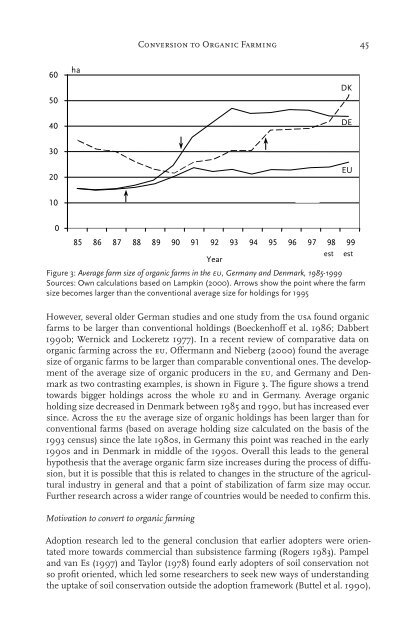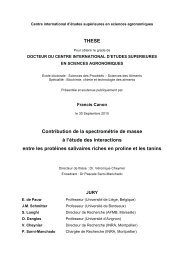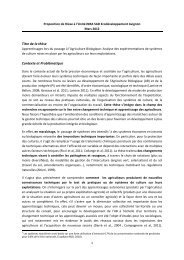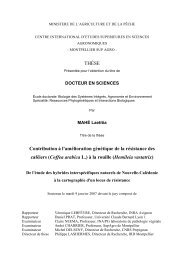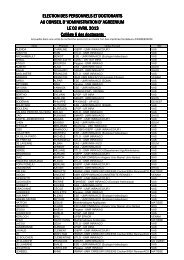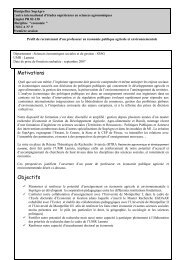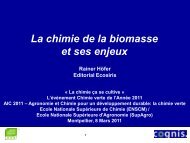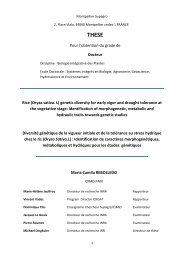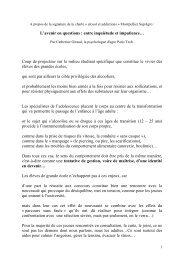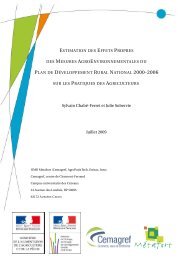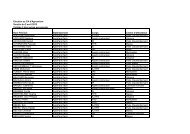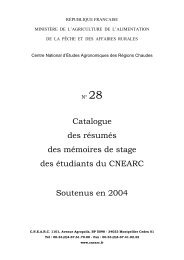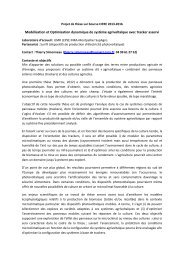Conversion to Organic Farming: A Typical Example of the Diffusion ...
Conversion to Organic Farming: A Typical Example of the Diffusion ...
Conversion to Organic Farming: A Typical Example of the Diffusion ...
Create successful ePaper yourself
Turn your PDF publications into a flip-book with our unique Google optimized e-Paper software.
Figure 4(1985-1999)605040Average farm size <strong>Conversion</strong> <strong>of</strong> organic <strong>to</strong> <strong>Organic</strong> farms in<strong>Farming</strong><strong>the</strong> EU, Germany and Denmark 45haDKDE3020EU10085 86 87 88 89 90 91 92 93 94 95 96 97 98YearestFigure 3: Average farm size <strong>of</strong> organic farms in <strong>the</strong> eu, Germany and Denmark, 1985-1999Sources: Own calculations based on Lampkin (2000). Arrows show <strong>the</strong> point where <strong>the</strong> farmsize becomes larger than <strong>the</strong> conventional average size for holdings for 1995Arrows show <strong>the</strong> point where <strong>the</strong> farm size becomes larger than <strong>the</strong> conventional average size for holdingsfor 1995However, several older German studies and one study from <strong>the</strong> usa found organicSource: farms Own calculations <strong>to</strong> be larger based than conventional on Lampkin holdings (2000) (Boeckenh<strong>of</strong>f et al. 1986; Dabbert1990b; Wernick and Lockeretz 1977). In a recent review <strong>of</strong> comparative data onorganic farming across <strong>the</strong> eu, Offermann and Nieberg (2000) found <strong>the</strong> averagesize <strong>of</strong> organic farms <strong>to</strong> be larger than comparable conventional ones. The developmen<strong>to</strong>f <strong>the</strong> average size <strong>of</strong> organic producers in <strong>the</strong> eu, and Germany and Denmarkas two contrasting examples, is shown in Figure 3. The figure shows a trend<strong>to</strong>wards bigger holdings across <strong>the</strong> whole eu and in Germany. Average organicholding size decreased in Denmark between 1985 and 1990, but has increased eversince. Across <strong>the</strong> eu <strong>the</strong> average size <strong>of</strong> organic holdings has been larger than forconventional farms (based on average holding size calculated on <strong>the</strong> basis <strong>of</strong> <strong>the</strong>1993 census) since <strong>the</strong> late 1980s, in Germany this point was reached in <strong>the</strong> early1990s and in Denmark in middle <strong>of</strong> <strong>the</strong> 1990s. Overall this leads <strong>to</strong> <strong>the</strong> generalhypo<strong>the</strong>sis that <strong>the</strong> average organic farm size increases during <strong>the</strong> process <strong>of</strong> diffusion,but it is possible that this is related <strong>to</strong> changes in <strong>the</strong> structure <strong>of</strong> <strong>the</strong> agriculturalindustry in general and that a point <strong>of</strong> stabilization <strong>of</strong> farm size may occur.Fur<strong>the</strong>r research across a wider range <strong>of</strong> countries would be needed <strong>to</strong> confirm this.Motivation <strong>to</strong> convert <strong>to</strong> organic farmingAdoption research led <strong>to</strong> <strong>the</strong> general conclusion that earlier adopters were orientatedmore <strong>to</strong>wards commercial than subsistence farming (Rogers 1983). Pampeland van Es (1997) and Taylor (1978) found early adopters <strong>of</strong> soil conservation notso pr<strong>of</strong>it oriented, which led some researchers <strong>to</strong> seek new ways <strong>of</strong> understanding<strong>the</strong> uptake <strong>of</strong> soil conservation outside <strong>the</strong> adoption framework (Buttel et al. 1990),99est


